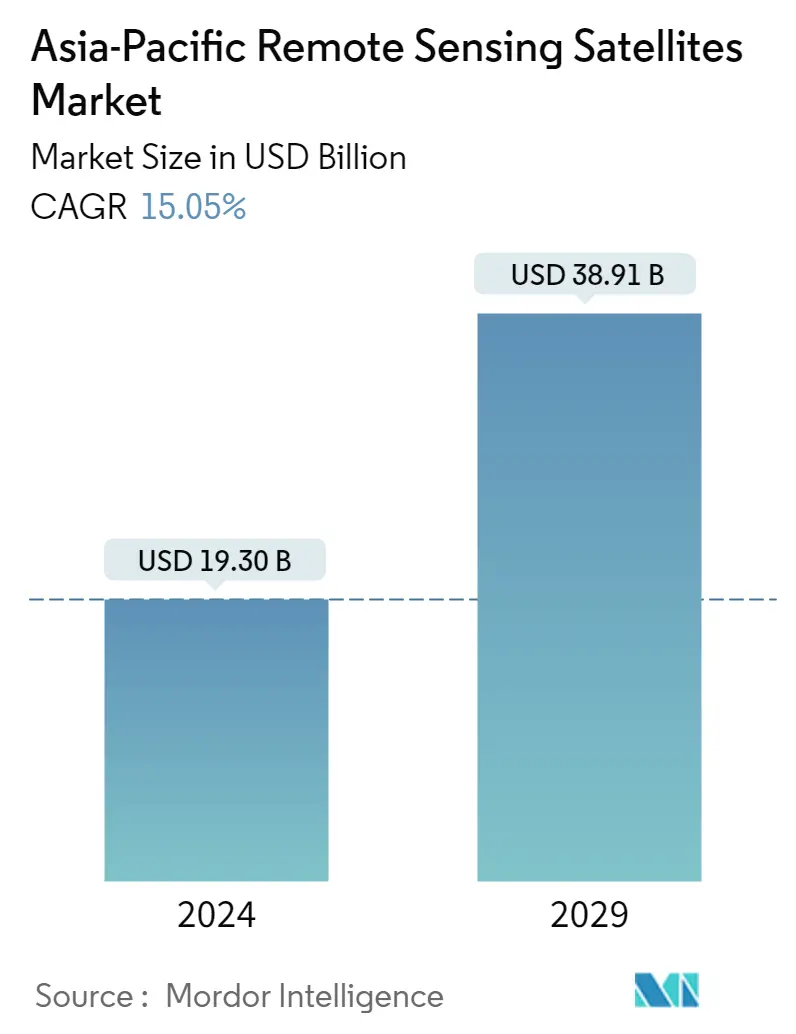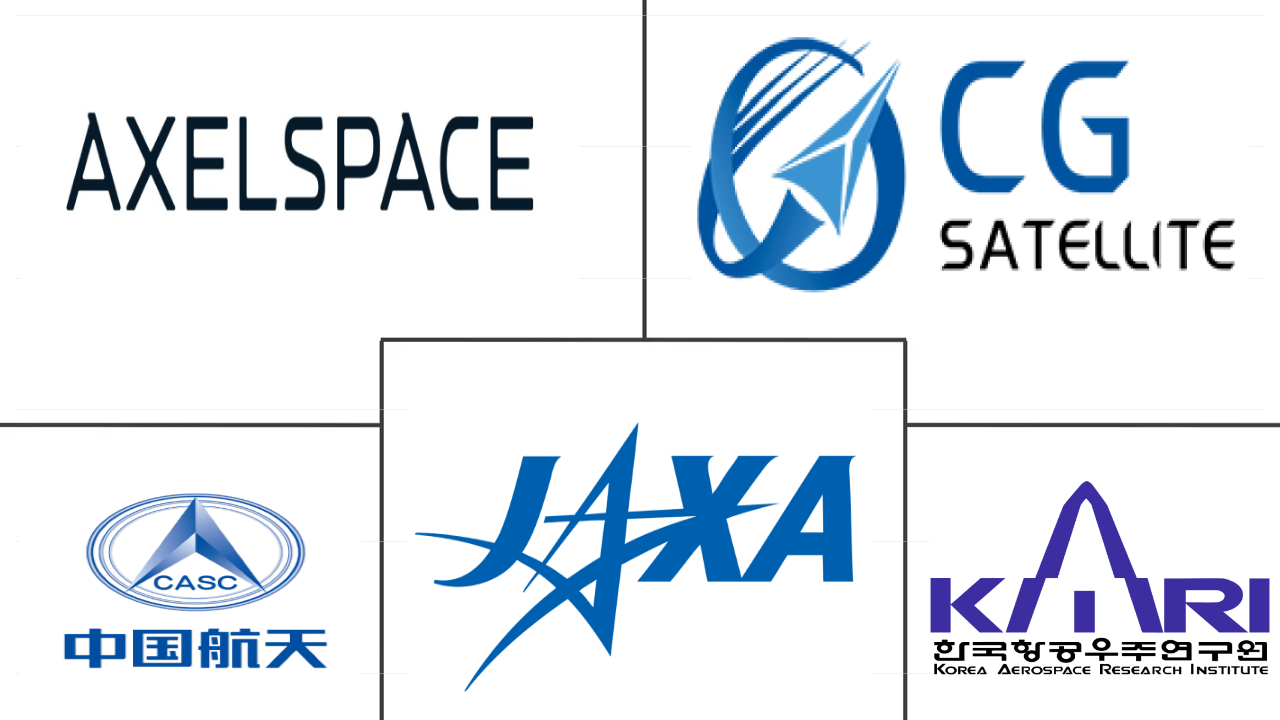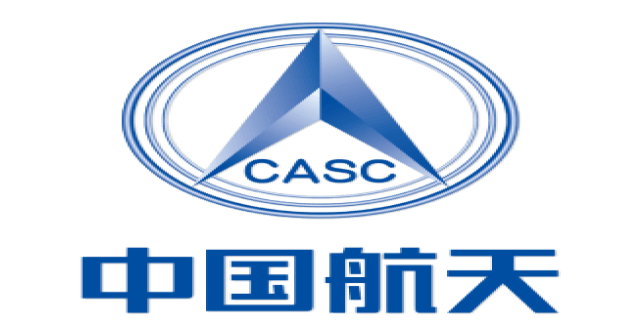Market Size of asia-pacific remote sensing satellites Industry

|
|
Study Period | 2017 - 2029 |
|
|
Market Size (2024) | USD 19.30 Billion |
|
|
Market Size (2029) | USD 38.91 Billion |
|
|
Largest Share by Orbit Class | LEO |
|
|
CAGR (2024 - 2029) | 15.05 % |
|
|
Largest Share by Country | South Korea |
Major Players |
||

|
||
|
*Disclaimer: Major Players sorted in no particular order |
Asia-Pacific Remote Sensing Satellites Market Analysis
The Asia-Pacific Remote Sensing Satellites Market size is estimated at USD 19.30 billion in 2024, and is expected to reach USD 38.91 billion by 2029, growing at a CAGR of 15.05% during the forecast period (2024-2029).
19.30 Billion
Market Size in 2024 (USD)
38.91 Billion
Market Size in 2029 (USD)
19.33 %
CAGR (2017-2023)
15.05 %
CAGR (2024-2029)
Largest Market by Satellite Mass
76.63 %
value share, above 1000kg, 2022
Large satellites register higher demand due to applications such as satellite radio, communications, remote sensing, planetary security, and weather forecasting.
Largest Market by Satellite Subsystem
80.28 %
value share, Propulsion Hardware and Propellant, 2022
The demand for these propulsion systems is driven by the launch of mass satellite constellations into space. They are used for transferring the spacecraft into orbit.
Largest Market by Orbit Class
87.05 %
value share, LEO, 2022
LEO satellites are increasingly being adopted in modern communication technologies as they play an important role in Earth observation applications.
Largest Market by End User
92.71 %
value share, Military & Government, 2022
The military and government segment is expected to grow significantly due to the increasing use of satellites in surveillance missions and the rising involvement of government space agencies in satellite development programs.
Leading Market Player
86.31 %
market share, China Aerospace Science and Technology Corporation (CASC), 2022

China Aerospace Science and Technology Corporation (CASC) is the largest player in the market. It offers a diverse range of launch vehicles and adopts a competitive pricing strategy to attract customers globally.
LEO satellites are significantly driving market demand
- The Asia-Pacific region has seen a significant increase in the demand for satellite buses to accommodate a wide range of satellite orbits, including low Earth orbit (LEO), medium Earth orbit (MEO), and geostationary orbit (GEO).
- LEO satellites have become increasingly popular for various applications, including Earth observation, weather forecasting, and communication. The demand for LEO satellites has been particularly strong in China, where companies such as Spacety and Chang Guang Satellite Technology Co. Ltd are offering satellite buses for LEO missions. China has been active in this market with the launch of its Gaofen series satellites.
- MEO satellites have become increasingly important for global navigation and positioning services such as GPS and Galileo. In the Asia-Pacific region, Japan has been a leader in this field, with the launch of the Michibiki series of MEO navigation satellites. China has also been investing in MEO satellites with the launch of the Beidou system.
- GEO satellites are particularly important for communication and broadcasting services, such as television and the Internet. The demand for GEO satellites has been particularly strong in India, where companies such as ISRO and Antrix Corporation Ltd have been developing advanced satellite buses for communication missions. China has also been investing heavily in GEO satellites, with the launch of the Zhongxing series of satellites.
Asia-Pacific Remote Sensing Satellites Industry Segmentation
10-100kg, 100-500kg, 500-1000kg, Below 10 Kg, above 1000kg are covered as segments by Satellite Mass. GEO, LEO, MEO are covered as segments by Orbit Class. Propulsion Hardware and Propellant, Satellite Bus & Subsystems, Solar Array & Power Hardware, Structures, Harness & Mechanisms are covered as segments by Satellite Subsystem. Commercial, Military & Government are covered as segments by End User.
- The Asia-Pacific region has seen a significant increase in the demand for satellite buses to accommodate a wide range of satellite orbits, including low Earth orbit (LEO), medium Earth orbit (MEO), and geostationary orbit (GEO).
- LEO satellites have become increasingly popular for various applications, including Earth observation, weather forecasting, and communication. The demand for LEO satellites has been particularly strong in China, where companies such as Spacety and Chang Guang Satellite Technology Co. Ltd are offering satellite buses for LEO missions. China has been active in this market with the launch of its Gaofen series satellites.
- MEO satellites have become increasingly important for global navigation and positioning services such as GPS and Galileo. In the Asia-Pacific region, Japan has been a leader in this field, with the launch of the Michibiki series of MEO navigation satellites. China has also been investing in MEO satellites with the launch of the Beidou system.
- GEO satellites are particularly important for communication and broadcasting services, such as television and the Internet. The demand for GEO satellites has been particularly strong in India, where companies such as ISRO and Antrix Corporation Ltd have been developing advanced satellite buses for communication missions. China has also been investing heavily in GEO satellites, with the launch of the Zhongxing series of satellites.
| Satellite Mass | |
| 10-100kg | |
| 100-500kg | |
| 500-1000kg | |
| Below 10 Kg | |
| above 1000kg |
| Orbit Class | |
| GEO | |
| LEO | |
| MEO |
| Satellite Subsystem | |
| Propulsion Hardware and Propellant | |
| Satellite Bus & Subsystems | |
| Solar Array & Power Hardware | |
| Structures, Harness & Mechanisms |
| End User | |
| Commercial | |
| Military & Government | |
| Other |
Asia-Pacific Remote Sensing Satellites Market Size Summary
The Asia-Pacific Remote Sensing Satellites Market is experiencing robust growth, driven by increasing demand for satellite buses across various orbits, including low Earth orbit (LEO), medium Earth orbit (MEO), and geostationary orbit (GEO). LEO satellites are particularly popular for applications such as Earth observation, weather forecasting, and communication, with significant activity in China through companies like Spacety and Chang Guang Satellite Technology Co. Ltd. MEO satellites are crucial for global navigation services, with Japan leading the way through its Michibiki series, while China continues to expand its Beidou system. GEO satellites, essential for communication and broadcasting, see strong demand in India, supported by advancements from ISRO and Antrix Corporation Ltd, alongside China's Zhongxing series. The region's market potential is further bolstered by the development of miniature satellites, which offer cost-effective launch solutions and sophisticated mission capabilities.
The market landscape in the Asia-Pacific region is characterized by significant contributions from China, Japan, and India, which are at the forefront of small satellite manufacturing. Despite a recent decline in launches, the market remains promising, with ongoing investments in startups and nano and microsatellite projects expected to drive revenue growth. China, in particular, is heavily investing in augmenting its space capabilities, having launched the most nano and microsatellites in the region. Singapore is also making strides in nanosatellite fabrication, with models like SpooQy-1 exploring quantum entanglement in space. The region's space infrastructure is supported by robust government initiatives, with China, India, Japan, and South Korea leading in investments and development. The market is fairly consolidated, with major players including Axelspace Corporation, Chang Guang Satellite Technology Co. Ltd, China Aerospace Science and Technology Corporation, Japan Aerospace Exploration Agency, and Korea Aerospace Research Institute, all contributing to the region's dynamic space landscape.
Asia-Pacific Remote Sensing Satellites Market Size - Table of Contents
-
1. MARKET SEGMENTATION (includes market size in Value in USD, Forecasts up to 2029 and analysis of growth prospects)
-
1.1 Satellite Mass
-
1.1.1 10-100kg
-
1.1.2 100-500kg
-
1.1.3 500-1000kg
-
1.1.4 Below 10 Kg
-
1.1.5 above 1000kg
-
-
1.2 Orbit Class
-
1.2.1 GEO
-
1.2.2 LEO
-
1.2.3 MEO
-
-
1.3 Satellite Subsystem
-
1.3.1 Propulsion Hardware and Propellant
-
1.3.2 Satellite Bus & Subsystems
-
1.3.3 Solar Array & Power Hardware
-
1.3.4 Structures, Harness & Mechanisms
-
-
1.4 End User
-
1.4.1 Commercial
-
1.4.2 Military & Government
-
1.4.3 Other
-
-
Asia-Pacific Remote Sensing Satellites Market Size FAQs
How big is the Asia-Pacific Remote Sensing Satellites Market?
The Asia-Pacific Remote Sensing Satellites Market size is expected to reach USD 19.30 billion in 2024 and grow at a CAGR of 15.05% to reach USD 38.91 billion by 2029.
What is the current Asia-Pacific Remote Sensing Satellites Market size?
In 2024, the Asia-Pacific Remote Sensing Satellites Market size is expected to reach USD 19.30 billion.

